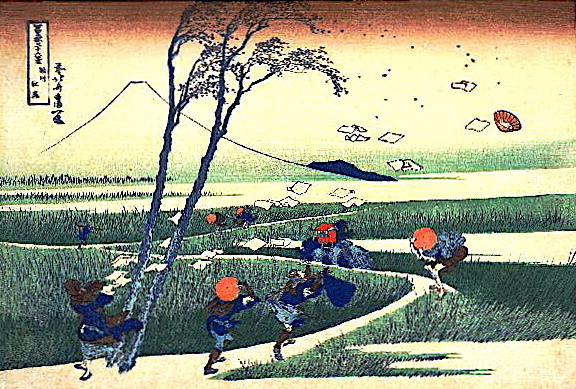In August, I gave–or I should say attempted to give–a presentation titled Gamification and High School EFL. Things did not go well. I tried to condense a previous 3-hr. workshop into an informative and thought-provoking 30-minute presentation. That was problem No. 1. But it wasn’t the only problem.
The day before, a keynote speaker named Kishimoto Yoichiro had talked about gamifying his university class on game design. It was very similar to what Lee Sheldon (another game designer teaching another game design course at a university in the US) had done. You can see my mini-review of Mr. Sheldon’s book, The Multiplayer Classroom, at this page. I enjoyed the presentation. Mr. Kishimoto was a thoughtful presenter and explained his rationale nicely and walked us through his syllabus carefully, explaining the assignments and the interactions. Having read Mr. Sheldon’s book, I understood what he was trying to show and say. But I don’t think many people listening felt that what he said had any relevance to their own classes; I don’t think many people left with a clear idea of what gamification is and how they could put it to work in their own classes. When I started my presentation the next day, I asked the participants if they had been at the gamification plenary the day before and if they now understood what gamification is. Most of them had: “Um…not really,” was the hesitant reply.
I had hoped to drag them into the light in my 30 minutes. But in the end, speaking too quickly and working on an unfamiliar computer and with one of my pair of two short videos refusing to play, I realized that I had failed. I think I managed to explain gamification fairly well. I think I managed to communicate what intrinsic motivation is and why it is important. I think I even got everyone to understand why narrative is so important. But what most certainly did not happen was enlightenment. Participants did not leave with any sense other than that gamification is a quirky, fringe movement, kind of like cosplay, that some people are doing, but definitely isn’t for everyone.
I was angry that I wasn’t able to show my second video. There was a contrast I wanted to show between two classroom scenes, a before and after a-ha moment I wanted to induce. At the time, I felt like I had brought them to the cusp of understanding, but lacking an essential component, the whole idea had collapsed. Thinking about it later, though, I realized that the stark truth is that my second video probably wouldn’t have made much difference. The stark truth is that real gamification–what I’ve been calling gameful design–requires a much better understanding and acceptance of the role of formative feedback, and the role of engagement (fun) and involvement (meaningfulness). The stark truth is that a form of gamification already exists in schools. Yup, you heard that right. It’s the way things are: students get points of performing actions. What teachers need to learn is not actually what gamification is, but rather what is the difference between bad gamification and good gamification. What Mr. Sheldon and Mr. Kishimoto are doing is not replicable in most high school classrooms, not bymost teachers or most normal human beings. That’s not only because it is uber-geeky and requires intimate familiarity with the culture of games (as it most certainly does!), but because those two teachers were willing to throw out the prevailing system of point-giving after teaching and testing, and replace it with a feedback system based on earned points for everything (user experience points). And they were not shy about having learners do unconventionally fun things in the classroom, sometimes things which mimicked game elements (quests, boss fights, zones), and sometimes quirky, fun things for no other reason than because they are fun (everyone wear yellow on project yellow day).
Knowing what I know about high school EFL in Japan–the primacy of the textbook, the tyranny of entrance exams, the necessity of loose coordination of syllabuses between teachers due to sharing of exams while accommodating different approaches, my advice for most high school teachers is instead of gamification, think about introducing more gameful design elements into your classes.
Some of the features of gameful design will work so long as you concentrate your efforts on two things: formative feedback and fun. You must have both of these. If you have only formative assessment, you risk being joyless (though certainly you will still be pedagogically effective). If you have only the narrative/fun, you risk being delightfully ineffective and eventually being seen as old hat and dull. I should add at this point that in my observation, most classes now provide neither narrative nor effective formative feedback. And if you are at all unsure why, you probably have never experienced an English class at a Japanese high school and you need to read up on formative feedback (start here). The hardest thing for most people to understand is how narrative can be used. Simply put, narrative is a story structure that can be used to add a meaningful context for activities. Activities under a selected narrative assume part of their meaning from the story. If a Hunger Games narrative, or a Harry Potter narrative, or a Buffy the Vampire Slayer narrative is applied to a series of activities, these activities become embedded in a system in which the heroes, villains, and general story organization and progression are already familiar.
So can any of this be useful to high school teachers? Absolutely. And below I am going to offer some things that can be tried in almost any class and that fit with the gameful design approach. Notice how each one has a narrative element (based on a story), has a play element (competition here, collecting or challenging), and a formative feedback element (students learn right away what to do and how to do it, since it impacts the ongoing play). These are only a few examples, but I think you’ll get the point. All aboard!
General Organizing Narrative Approaches
The Harry Potter Approach: Organize your class into three groups to match the houses in the Harry Potter series: Gryffindor, Ravenclaw, and Hufflepuff (leaving Slytherin out). The three houses are told that they will compete for the house cup throughout the year. Points will be awarded for in-class effort, assignment, quiz and test performance, etc. Points may also be taken for behavior infractions. Different parts of the syllabus can be re-named according to various classes held at Hogwarts: potions (grammar), herbology (vocabulary), charms (speaking), and defense against the dark arts (writing). Just about anything you can think of doing in or with your class can be re-imagined as something from the Potter series. And the pull of Potter on HS students is strong. This past summer saw a Harry Potter exhibition in Tokyo (with 8000 yen souvenir wands!) and next year sees the opening of a Harry Potter theme park in Osaka.
For Homework or Discipline
The Homework Tessarae: If your high school is like my daughter’s, you have trouble getting students to do homework. Well, in addition to connecting homework to classroom lessons (make sure HW content is “necessary” in the subsequent lesson), try the Hunger Games Tessarae. Tessarae is a system in the book/movie where characters can get more food for their families if they add their name to the Hunger Games lottery (reaping). In the book, adding your name to the lottery increases your chances of being chosen for the games (and probably dying), but we can we can put a nicer spin on this by saying that if you COMPLETE your homework on time and to a certain standard, your name gets added into a pot for a class lottery with a good nice prize. This idea is similar to the speed camera lottery idea tried successfully in Europe. If you do an exceptional job, you can get your name added even more times! This gives the teacher an easy way to acknowledge and reward effort. For classes using a Harry Potter narrative, this could be a Goblet of Fire.
The Secret Student: This idea, via Dylan Wiliam, requires that you select and monitor one student each day–secretly. At the end of the day, if the student’s behavior has be sufficiently positive, the student is identified to the class and a point is added toward a future reward prize (a class trip, a class party, a special sweet, etc.). If the secret student’s behavior has not been good (the student has been uncooperative, disruptive, or failed to speak only in English during the pair work activities, etc.), then the class is informed that they didn’t earn a point for the day. The name of the unsuccessful secret student is NOT revealed. For classes using a Harry Potter narrative, this could be used just as it is, with the addition of house points also being given or taken away.
For Projects
From Project to Game (extended from an idea by Nicola Whitton in Using Games to Enhance Learning and Teaching): Ask students to design and make an A-Z school or community introduction booklet. Each pair of students is assigned a different letter of the alphabet and a different topic (a=art class, b=basketball club, etc.). Their task is to take a picture and write a short description introducing that thing. The goal of the project is to make a student-produced photo introduction to the school or community. For the game part, the teacher is assigned the letter X. The teacher makes a cryptic photo card explaining that the X marks the location of some kind of treasure or treasure map or clue to the location of some treasure that students have to puzzle out. Over the next few days/weeks, the students are engaged in solving clues or riddles to find the treasure. See the post on ARGs if you would like to know more about this type of activity.
That’s it for now. I hope to update this list in the future, but I think there is enough here to help you understand what gamification–or rather gameful design–can do for you and how it can do so.
This post is part of a series on gamification:
- Intrinsic and Extrinsic Rewards
- Triggers, Ability, and Motivation
- Mechanics
- The Downside and How to Avoid It
- The Whole Hog?
- ARGs
- Required Reading
- HabitRPG and Other Web-based Systems
First Image: Fagment from Train Wreck, 1922. Source: http://upload.wikimedia.org/wikipedia/commons/3/31/Train_Wreck_1922.jpg
Second Image: Fragment from Train on a Big Bridge. Source: https://ja.m.wikipedia.org/wiki/%E3%83%95%E3%82%A1%E3%82%A4%E3%83%AB:KSR_Train_on_a_big_bridge_05-02-12_71.jpeg
















